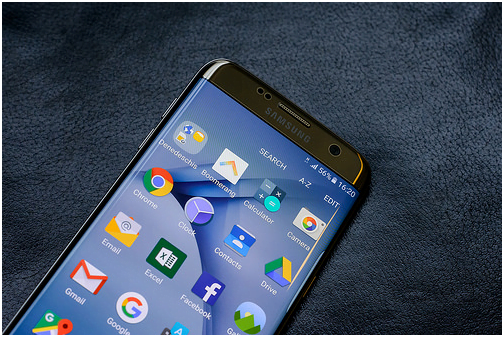There’s always something seductive about the hot new release, and the Samsung Galaxy S8 has a slick new design and some interesting features that will definitely catch your eye. But is it really better than the Galaxy S7 Edge?
These two phones have such similar abilities and technical prowess that your preference will be determined by minor details.
Here’s a look at the key features of both models to help you decide which phone is the best option for you.
Build
Image via Flickr by Răzvan Băltărețu
The Samsung Galaxy S8 is the winner when it comes to overall design. The sleek, exceptionally beautiful phone is stunning to look at and feels good in hand, and it’s a nice weight at 5.36 ounces.
The S8 measures at 5.86 by 2.68 inches with a thickness of .31 inches, while the S7 Edge comes in at 5.94 by 2.86 inches and a thickness of .30 inches.
The size difference is noticeable, but what sets the two apart in terms of build is really the screen size. The S8 has the incredibly slick, bezel-free Infinity screen that allows the display to go all the way to the curved edges. The 6.2-inch screen is definitely a showstopper, but the screen size on the S7 Edge is no slouch at 5.5 inches.
The S8 has an unheard-of screen-to-body ratio of 83.32 percent, with the S7 Edge coming in at 76.09 percent.
The S8 has one aspect of its physical design that’s generating a lot of criticism, and that’s the fingerprint reader. It’s on the back of the phone right next to the camera lens. This placement may or may not be an issue for you, but it’s something to consider when you think about the day-to-day usability of the S8.
Camera
The cameras on the S7 Edge and the S8 are nearly identical when it comes to specs that will impact most users. Both are 12 megapixels, and both have a F1.7 aperture size, a 26 mm focal length (the equivalent of a 35 mm), and 1.4 um pixel size.
The differences are minute, but the S8 camera can do a few things that might be important to you. The S8 allows for better shutter speed control, the video camera has more shooting modes, and the front-facing camera shoots 8 megapixels instead of the S7 Edge’s 5 megapixels.
Features
The S7 Edge and S8 are very similar in terms of speed, usability, and overall features, although the S8 does have the slightly more robust Qualcomm Snapdragon 835 chip and a processor that’s a little faster. It’s hard to say whether you’ll notice a difference during normal use of your phone, but probably not.
The big addition with the S8 is the feature called Bixby, Samsung’s “intelligent assistant” — in other words, Samsung’s answer to Siri. Samsung says Bixby will learn from you as you use it. You can use voice control to have Bixby pull up certain photos for you, operate your camera, and perform myriad other actions that make your phone easier to use.
Performance
One of the biggest improvements from the S7 Edge to the S8 is the USB port. The S7 Edge has the mini-USB port while the S8 has the more desirable C-type USB port. Both have mobile hotspot capability, as well as an accelerometer, gyroscope, compass, and barometer. Samsung Pay is the same on both phones.
Turn-by-turn navigation and voice-activated navigation are virtually the same on both phones. An unlimited data plan for the Galaxy S8 or Galaxy S7 Edge from T-Mobile will come in handy if you want to maximize the capabilities of the your Samsung smartphone.
Battery life on the S8 is rated at 29 hours of talk time, while the S7 Edge gives you 36 hours of talk time. The S8 supports wireless or wired fast-charging, which is one big advantage over the S7 Edge.
If you’re a moderate to heavy user, these phones will suck up a lot of battery power so you’ll probably be charging at the end of the day. The fast charge feature just makes it that much easier.
The S7 Edge and the S8 are both great smartphone options, but weighing the smaller details will point you toward the phone you can get the most out of.









